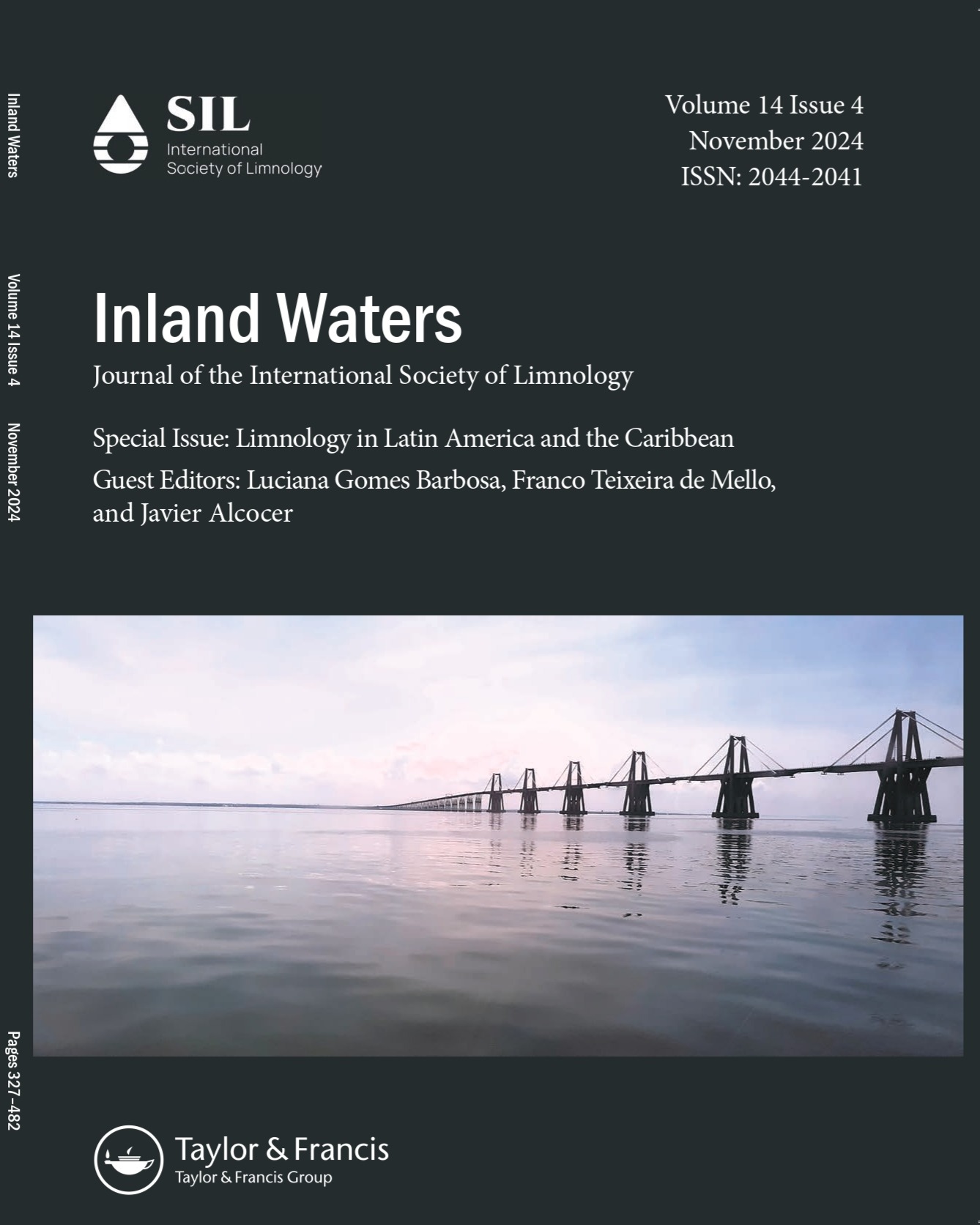CyaNut
Controlling cyanobacterial blooms through nutrient load reduction – learning from experience
Controlling cyanobacterial blooms through nutrient load reduction – learning from experience
Chair
Aims
The aim of this SIL working group is to provide a longer-term platform for collaboration to evaluate, consolidate and systematise the vast amount of dispersed information on – and experience with – nutrient control of eutrophication, specifically of cyanobacterial blooms. The ultimate aim is to use this knowledge for developing guidance for management and decision makers on different levels: for waterbody management on the local or regional level, for national governments developing regulations and for organisations that develop frameworks such as the World Health Organization’s guidance on managing toxic cyanobacteria.
The WG on bloom control appreciates input from anyone who wants to join with further data, commitment of time to work on data evaluation, and publications.
Latest Updates & Current Activities:
The situation: gaps regarding control through reducing N
The banning of P from detergents in many countries since the 80s of the last century has led to reductions in phosphorus loads in numerous water bodies, which has been instrumental in cyanobacterial bloom mitigation. Because reducing point loading of P is less costly than implementing N reductions via nitrification and denitrification, removal of P has overall been more effective than the removal of N. With faster decreases in concentration of P as compared to N loads, the total N:P ratios in aquatic ecosystems have increased in numerous lakes. Such an excess of N relative to P may lead to P limitation, or at least result in co-limitation of N and P.
At the same time, however, the legacy P stored in the sediments can cause strong internal loading, particularly during summer when cyanobacterial blooms occur. Depending on the water exchange rate it may take decades to gradually export this internal load, even if the external load has been reduced to a level where target concentrations within the waterbody can be achieved. Moreover, while on an annual basis the sediment can become a sink rather than a source for P, during summer it can continue to be a source of readily bioavailable dissolved inorganic P.
Control of eutrophication and cyanobacterial blooms can also be achieved through sufficient reduction of nitrogen loading. This has the key advantage of N possibly being “lost” to the atmosphere as N2, with denitrification particularly strong in summer when cyanobacterial blooms occur. This results in less legacy storage in the sediments, allowing for a substantially more rapid decrease of in-lake concentrations in response to N mitigation actions. However, worldwide there is limited experience with freshwater eutrophication control via N loading, largely because these efforts have lagged behind the longer history of P controls, and also because of a concern that N-limitation could promote dominance of N2-fixing cyanobacteria. While these are often (but not always) observed under N-limitation, it is now clear that N2-fixation cannot compensate for N losses and that N-limitation can effectively control cyanobacteria.
Meanwhile, pollution of the biosphere with reactive nitrogen species is a global concern, as emissions continue to increase from multiple sources. For waterbodies the excessive use of fertilisers and spreading of manure from animal husbandry is the main source of N while atmospheric deposition from burning of fuels can also be relevant in more pristine catchments. Excessive N inputs to water bodies can lead to increased N in the outflow. This can contribute to the eutrophication of N-limited ecosystems downstream, particularly estuaries and coasts, and highlights the need to plan eutrophication considering N and P control along a freshwater to marine continuum.
While stringent regulations of N and P emissions are the essential basis for nutrient management, they are often insufficiently implemented. This applies particularly to N, for which stringent emission reduction is badly needed. However, catchments and waterbodies differ, and many require additional management approaches beyond generic regulations. For such additional measures, controversy remains about whether the specific target of mitigating cyanobacterial blooms is best achieved by reducing the concentrations of P or of N or of both. Resolving this controversy requires developing site-specific approaches, tailored to their specific conditions and pressures of the respective waterbody.
Research needs for effective nutrient control
Assessing specific waterbody conditions needs an understanding of key mechanisms governing its nutrient loads, concentrations, and phytoplankton community responses. For this, new opportunities are available for learning from experience. These include the huge amount of waterbody data that can be evaluated for the impact of specific conditions and pressures on nutrient budgets and phytoplankton responses. Time series from individual waterbodies spanning decades of trophic state change, including recovery from eutrophication, are particularly valuable to promote our understanding of which measures worked where and why.
Key questions include:
· What do we need to know about a waterbody in order to set nutrient concentration targets for effective mitigation of eutrophication and bloom control (characteristics like retention time, mixing, temperature, light, alkalinity, and browning)? How low do concentrations of P and/or N need to be, depending on waterbody conditions, to keep cyanobacterial blooms below the amount and duration targeted? What are the roles of organic forms of N and P, the loads of which appear to be increasing in many watersheds? How can we use our knowledge of cyanobacterial traits to set nutrient concentration targets for a specific waterbody?
· What time span should we expect for the waterbody’s response to load reduction; how many years is it likely to take until it reaches target nutrient concentrations? What roles do nutrient loading legacies play in system responses to N and P reductions? What are the major mechanisms behind internal nutrient cycling, and are there mechanisms that may explain both N and P release? What mechanisms may cause resilience of the biota?
· Where additional measures beyond generic emission reduction for N and P are necessary, which criteria are important for focusing further measures on P or on N? What are the downstream effects of changing the N:P ratio? Are there situations in which inducing N-limitation can promote N-fixing cyanobacteria? How feasible are measures in the catchment requiring commitment of further stakeholders?
· What data are essential for planning restoration and bloom control? How relevant is knowing the currently limiting nutrient for such decisions? Would nutrient enrichment experiments provide information beyond that gleaned from ambient concentrations if they addressed shifts in species composition?
The discussion of these questions at a full-day special session of SIL 2022 led to an international group of approximately 30 limnologists and aquatic ecologists collaborating to address these questions, as first step by reviewing the pertinent literature while in parallel collating data to evaluate in a second step to follow later. These data include both a large data set on cyanobacterial biomass and chlorophyll-a relative to nutrient concentrations and waterbody conditions and – in particular – a collection of long-term data series of individual waterbodies undergoing trophic change, i.e. “de-eutrophication” and/or eutrophication. We anticipate this to be a longer-term and ongoing task, as further experience accumulates and as waterbody conditions change in response to changes in climate and anthropogenic pressures.


